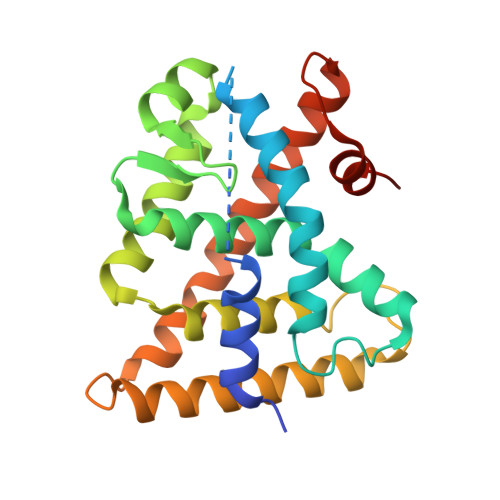Conformationally Defined Rexinoids for the Prevention of Inflammation and Nonmelanoma Skin Cancers.
Atigadda, V.R., Kashyap, M.P., Yang, Z., Chattopadhyay, D., Melo, N., Sinha, R., Belyaeva, O.V., Chou, C.F., Chang, P.L., Kedishvili, N.Y., Grubbs, C.J., Renfrow, M.B., Muccio, D.D., Elmets, C.A., Athar, M.(2022) J Med Chem 65: 14409-14423
- PubMed: 36318154
- DOI: https://doi.org/10.1021/acs.jmedchem.2c00735
- Primary Citation of Related Structures:
7UW2, 7UW4 - PubMed Abstract:
Compound 1 is a potent rexinoid that is highly effective in cancer chemoprevention but elevates serum triglycerides. In an effort to separate the lipid toxicity from the anticancer activity of 1 , we synthesized four new analogs of rexinoid 1 , of which three rexinoids did not elevate serum triglycerides. Rexinoids 3 and 4 are twice as potent as rexinoid 1 in binding to Retinoid X receptor (RXR). All-trans retinoic acid (ATRA) plays a key role in maintaining skin homeostasis, and rexinoids 3-6 are highly effective in upregulating the genes responsible for the biosynthesis of ATRA. Inflammation plays a key role in skin cancer, and rexinoids 3 and 4 are highly effective in diminishing LPS-induced inflammation. Rexinoids 3 and 4 are highly effective in preventing UVB-induced nonmelanoma skin cancer (NMSC) without displaying any overt toxicities. Biophysical studies of rexinoids 3 and 5 bound to hRXRα-ligand binding domain (LBD) reveal important conformational and dynamical differences in the ligand binding domain.


















